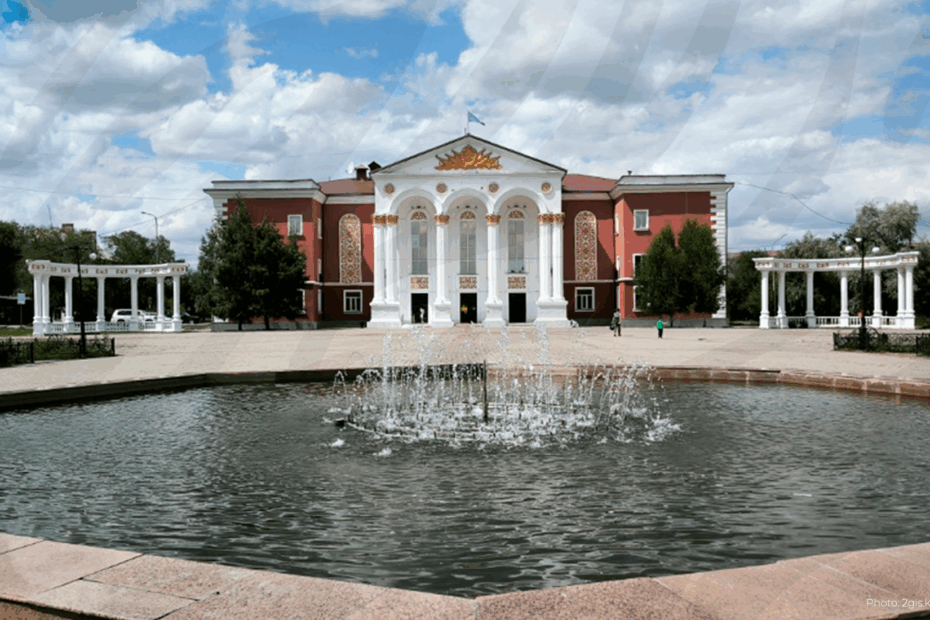Azamat Zhanseitov,
Chief Expert of the Regional Affairs Department of
KazISS under the President of the Republic of Kazakhstan,
KazISS Representative in the Karaganda region
Single-industry towns in Kazakhstan are often linked to the decline of industrial heritage, social stagnation, and out-migration. However, the experience of Saran shows that even a mono-economy rooted in the industrial era can be transformed into a diversified growth hub, given a systematic approach and comprehensive support.
In 2019–2020, Saran was in the same condition common to the most of single-industry towns in Kazakhstan. The economy relied on a limited number of enterprises, mainly in the housing and utilities, transportation sectors. The unemployment rate was consistently above the regional average, especially among women and youth. The infrastructure was in a critical condition: deterioration of utility networks, roads, and heating systems exceeded 60% which objectively hindered the launch of new industries and the development of entrepreneurship.
However, the problems were not only physical in nature. Institutional governance also showed weaknesses as there were no structures to support small businesses, no effective mechanisms to assist investors, and no analytical basis for strategic planning. At the same time, the city retained certain advantages: a favorable geographical position between Karaganda and Temirtau, as well as available industrial sites with basic infrastructure. All of these created the groundwork for industrial growth, provided there was sufficient political will and well-designed support.
The years of 2020–2024 marked a turning point in the town’s history. Saran evolved from a dormant single-industry town into an actively developing industrial hub. The catalysts for change were:
- targeted state investments coordinated at the level of the Republic and the region. One of the key steps was the creation of the Saran industrial zone. It was accompanied not only by the construction of engineering infrastructure, but also by the provision of administrative and tax preferences for investors. Unlike isolated industrialization, the new industrial zone was developed as a logically connected system, focused on cooperation between enterprises and inclusion in the logistics chains of the region;
- solving infrastructural problems. Saran received republican funding for modernization of engineering networks, roads, heating and water discharge. The elimination of infrastructure constraints has ensured a stable and predictable environment for businesses and investors;
- changes in the approach to personnel training. The town became one of the pilot sites for retraining and advanced training oriented to the specific needs of new industries. These measures made it possible to activate population groups previously not involved in labour activity, including young people and women;
- administrative reform. The replacement of key leaders, the shift of the akimat’s role from administration to facilitation, and the introduction of proactive planning and monitoring helped move the town away from bureaucratic formality toward a genuine economic policy at the local level.
By 2025, Saran emerged from a subsidized existence and entered a phase of industrial growth. The rate of job creation in the industry during 2023–2024 exceeded the regional average by 17%. A particularly positive trend was the reduction in migration outflow, notably among young professionals. There were even cases of qualified specialists returning to the city.
A new urban identity is gradually taking shape. IT centers, sports facilities, and youth spaces have begun to open in Saran. All of these lays the groundwork for quality transformation of the urban environment. The revival of the local service market and the growth of consumer purchasing power serve as additional indicators of economic recovery.
Nevertheless, several risks remain. Employment is still predominantly concentrated in industrial sectors, while the service sector and digital employment are underdeveloped. The healthcare and education systems require major upgrades, since there is a shortage of qualified professionals and modern facilities. The digitalization of governance and urban infrastructure is at an early stage and demands systemic efforts.
Saran’s experience shows that transforming a single-industry town is possible if several key conditions are met.
First, strategic planning should focus not on fragmented projects but on building a cohesive industrial core.
Second, infrastructure must be prepared in advance, before investors’ arrival, not afterwards.
Third, the role of local authorities is critically important, as an active akimat becomes a coordinator of economic growth, not just an administrator.
In addition, targeted workforce training aligned with specific production needs has proven effective. Instead of abruptly abandoning the mono-economy, a gradual approach was taken to develop new industries which ensured stability during the transition period.
Other single-industry towns should remember that infrastructure and support teams are more crucial than simply attracting the first investors. Copying foreign models without taking local resources, logistics, population structure, and entrepreneurial culture into account, can result in superficial development. High-quality communication between residents, businesses, and the government is also essential – not as mere reporting, but through dialogue, digital feedback, and joint planning.
Finally, it’s important to emphasize that simple industrialization without demand, skilled labour, and logistics does not yield lasting results. The formal launch of an industrial zone without supportive institutions creates a risk of stagnation. Ignoring social and environmental consequences in pursuit of a rapid “breakthrough” may lead to repeating past mistakes in a new form.


